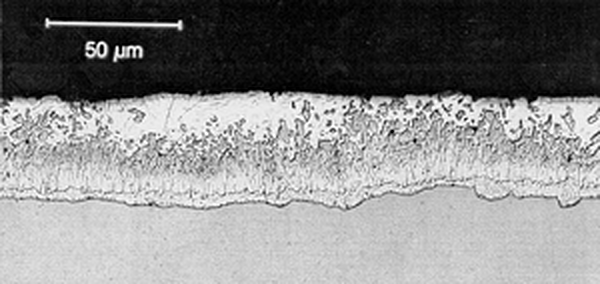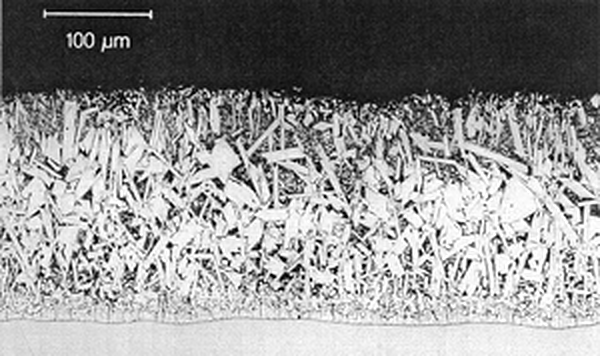Coating Thickness Control of High and Low Silicon Steels
Is there a way to lower the coating thickness of high-silicon steel or to raise the coating thickness of low-silicon steel?
Yes. You can blast clean the steel prior to hot-dip galvanizing. Blast cleaning is a process that relies on mechanical forces to clean a surface with some form of media blasted toward the surface of the product. Wheel blasting and air blasting systems are the most commonly used mechanisms of delivery. Wheel blasting is best suited for heavy media and metal shot, while air blasting is best suited for light-weight media that will respond well to air acceleration. The most commonly used blast media include aluminum oxide, carbon dioxide, baking soda, crushed corncobs, dry ice, glass pellets, metal shot, sand, silicon carbide, steel grit, walnut shells, and wire cuttings.

The low-silicon steel (less than 0.04%) creates a zinc coating that is limited by the interdiffusion of iron and zinc. However, the thickness can be controlled by blast cleaning the steel prior to galvanizing. The blast cleaning of the steel causes a very rough base steel surface creating an easier diffusion path for the iron and zinc to mix. This allows the zinc coating to become much thicker than normal. See Figure 1 above for a microstructure of hot-dip galvanized low silicon steel.

High-silicon steel can naturally create a very heavy and thick zinc coating when it is hot-dip galvanized. However, the thickness can be controlled by blast cleaning the steel prior to galvanizing. Blast cleaning the steel causes the zeta layer of the coating to become very rough, with numerous peaks and valleys in it. These peaks and valleys actually interfere with the zinc coating growth and can be seen in the microstructure of hot-dip galvanized high silicon steel in Figure 2. This interference during the hot-dip galvanizing process keeps the zinc coating from growing at an accelerated rate. The final coating thickness after blasting is then much lower than the coating thickness would be without blasting.
Even by using a blast cleaning technique to control the zinc coating thickness of galvanized products, the recommended silicon composition for steel is either less than 0.04%, or between 0.15% and 0.25%, in order to achieve normal coating thickness.
© 2025 American Galvanizers Association. The material provided herein has been developed to provide accurate and authoritative information about after-fabrication hot-dip galvanized steel. This material provides general information only and is not intended as a substitute for competent professional examination and verification as to suitability and applicability. The information provided herein is not intended as a representation or warranty on the part of the AGA. Anyone making use of this information assumes all liability arising from such use.

